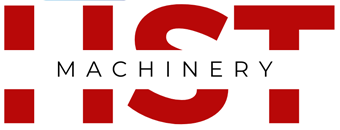BLOG
Our aim is to provide customers with professional project management and product manufacturing solutions
Quality Control and Inspection Methods in Steel Structure Manufacturing
Ensuring the quality and reliability of steel structures is crucial for safety, durability, and compliance with industry standards. Quality control and inspection methods are implemented at various stages of manufacturing to detect defects and guarantee structural integrity. Below are the primary quality control and inspection techniques used in steel structure manufacturing:
1. Raw Material Inspection
Quality control begins with the selection and inspection of raw materials. The steel used must meet industry standards for strength, composition, and durability. Inspections typically include:
Chemical Analysis: Ensures the correct composition of steel.
Mechanical Testing: Evaluates tensile strength, hardness, and flexibility.
Visual Inspection: Identifies surface defects such as cracks, rust, or inclusions.
2. Dimensional and Tolerance Checks
Precise dimensions are critical in steel structure manufacturing. Inspection methods include:
Calipers and Micrometers: Measure thickness and length of steel sections.
Laser Scanning and 3D Measurement: Provides high accuracy in verifying complex structures.
Templates and Jigs: Ensure consistency in repetitive components.
3. Welding Inspection
Welding is one of the most critical processes in steel structure fabrication. The following methods ensure strong and defect-free welds:
Visual Inspection: Checks for surface cracks, porosity, and misalignment.
Ultrasonic Testing (UT): Detects internal defects such as voids and incomplete fusion.
Radiographic Testing (X-ray): Provides a detailed view of weld integrity.
Magnetic Particle Testing (MT): Identifies surface and near-surface cracks in ferromagnetic materials.
4. Surface Treatment Inspection
Protective coatings are essential to prevent corrosion and enhance durability. Quality checks include:
Surface Preparation Inspection: Ensures proper cleaning through sandblasting or chemical treatment.
Coating Thickness Measurement: Uses instruments like ultrasonic gauges to verify coating uniformity.
Adhesion Testing: Ensures coatings adhere properly to steel surfaces.
5. Load and Structural Testing
To confirm the structural integrity of fabricated steel components, various load tests are performed:
Tensile and Compression Testing: Evaluates how the structure withstands applied forces.
Fatigue Testing: Assesses the durability of steel under repeated loading cycles.
Deflection and Deformation Analysis: Ensures structures do not bend or deform beyond acceptable limits.
6. Final Inspection and Documentation
Before dispatch, a final inspection is conducted to verify that all components meet required specifications. This includes:
Assembly Checks: Ensuring all parts fit and align correctly.
Marking and Labeling: Identifying components for proper installation.
Quality Certification: Issuing compliance certificates as per industry standards.
Conclusion
Implementing rigorous quality control and inspection methods in steel structure manufacturing ensures safety, longevity, and compliance with engineering standards. By systematically inspecting materials, welds, coatings, and final assemblies, manufacturers can deliver high-quality steel structures that perform reliably in various applications.


